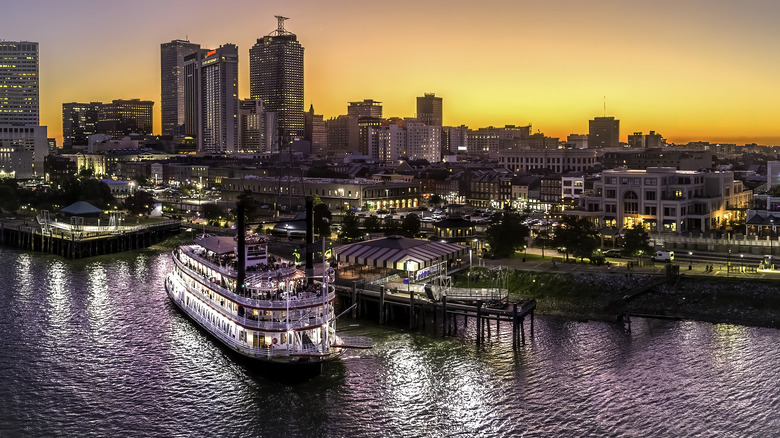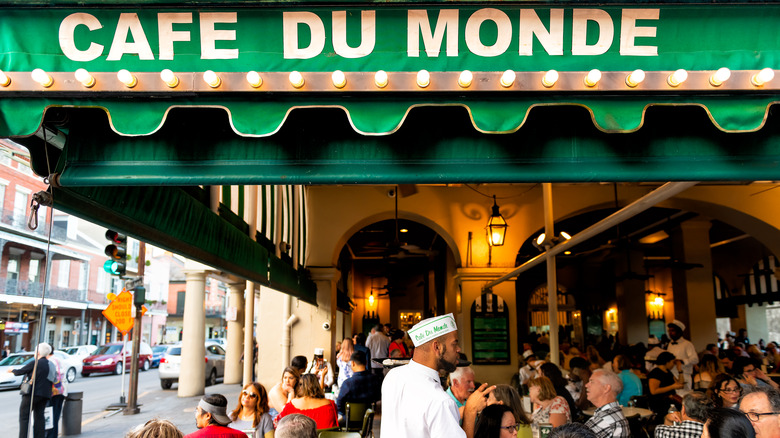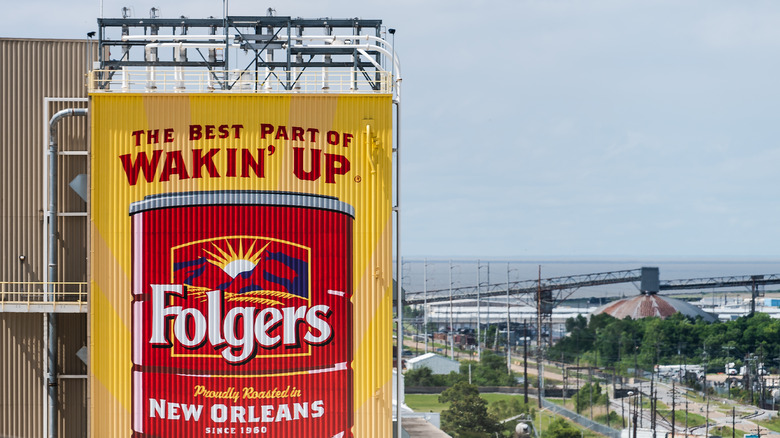The Crucial Role New Orleans Plays In America's Coffee Industry
The United States consumes more coffee than any other country in the world, with an average of 146 billion cups guzzled each year. And yet there are only two U.S. states that produce coffee, Hawaii and California. All of that imported coffee has to enter the country somewhere, which is where the Port of New Orleans comes in. New Orleans has been one of the biggest coffee importers in the U.S. for 300 years.
New Orleans plays such an important role in coffee imports primarily because of its location. For one, it's very close to the Caribbean and Latin America. These days, the U.S. imports most of its coffee from Brazil and Colombia. Being one of the closest ports to these countries makes New Orleans an obvious choice. But New Orleans also sits right at the mouth of the Mississippi River which makes transportation into the rest of the country that much easier.
The history of coffee in New Orleans
The first coffee shipped to New Orleans got there in the 18th century, coming from Cuba. By the 1840's, New Orleans had become such an important part of the international coffee trade that it was the second largest port for it in the country. By 1857, New Orleans was importing over 500,000 bags of coffee beans per year, but it wasn't long before the Civil War broke out which cut off supply to the port city. The city's iconic cup of coffee with roasted chicory root became popular during this era as the locals experimented with how to make their coffee supply last longer.
An unsung hero of New Orleans coffee history is Rose Nicaud, a Black woman born into slavery in the 19th century. In New Orleans, enslaved people were given the unusual benefit of a one-day weekend. Nicaud spent this time roasting her own coffee which she sold at the Sunday market. She was so successful that, at the age of 28, she had raised enough money to buy her freedom. Her coffee stand in the French Market helped kickstart a trend, paving the way for local coffee staples like the Café du Monde which has been operating since 1862. You can still visit it today for its simple yet legendary café au lait or a New Orleans-style iced coffee.
Modern New Orleans coffee culture
For centuries, New Orleans has been a titan of the domestic coffee industry but you don't get that kind of title without overcoming a few obstacles. When Hurricane Katrina hit in 2005, the infrastructure of the port was badly damaged but it was still averaging around 250,000 tons of coffee every year. In 2016, it got its feet back underneath it when it nearly doubled its previous import — jumping to a whopping 530,000 tons.
Much of the green coffee beans are processed right there in the city, though plenty gets transported to various commercial and craft roasters around the country. Folgers, popular for its large cans of ground coffee, roasts all of its coffee in a New Orleans facility. The modern rise of micro roasters has come to New Orleans in recent years as well, with an increased focus on craft. These small batch coffee roasters look to blend the rich history of New Orleans coffee culture with modern sensibilities and tastes. Brands like Mojo Coffee Roasters and Pretty Coffee have come to take a commanding role on the scene with ethically sourced beans and a love of all things local.


